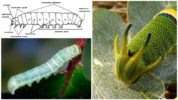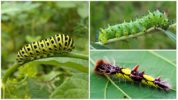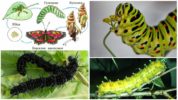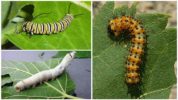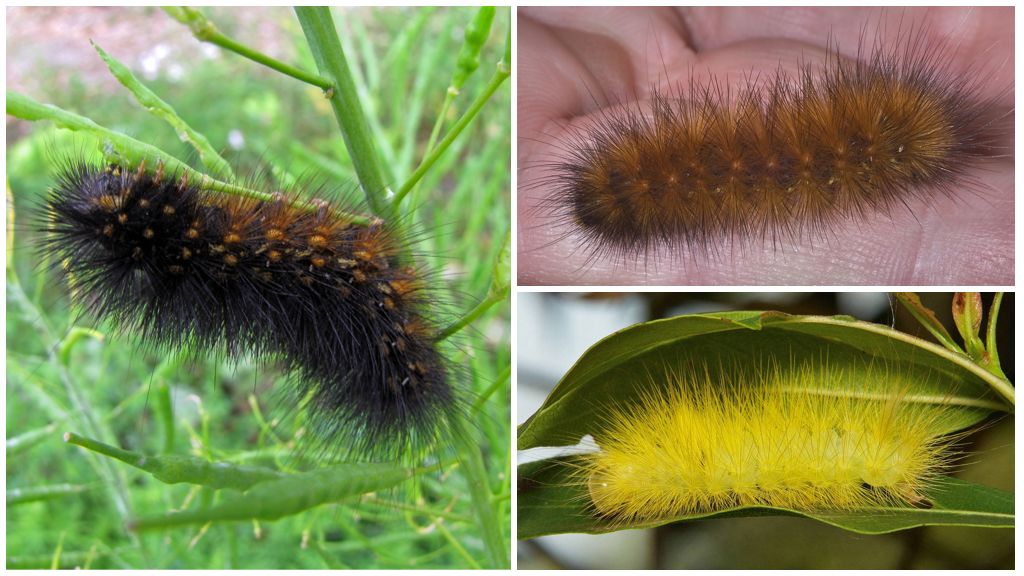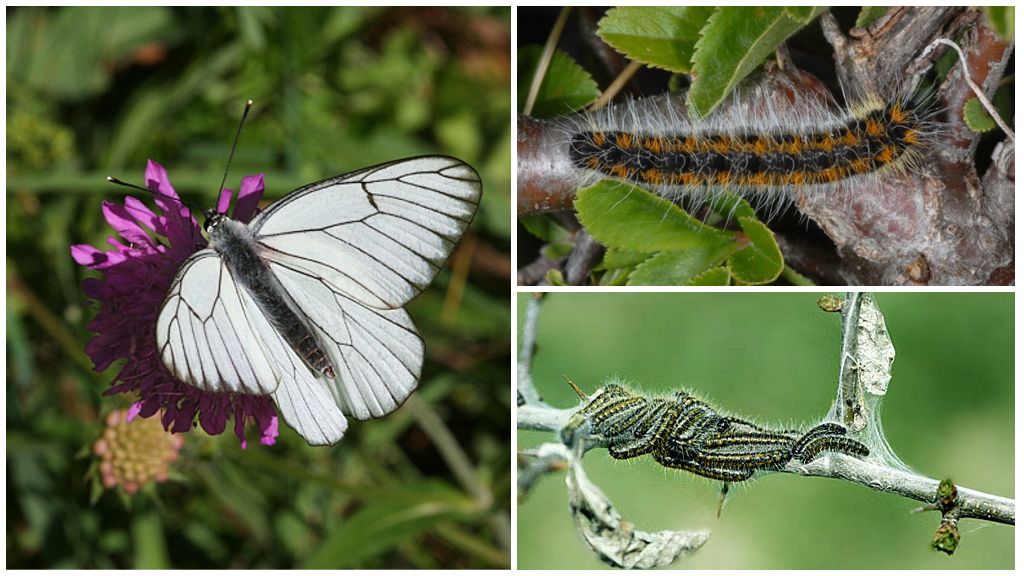- Caterpillar structure
- Caterpillar
- Caterpillars
- Track feed
Any caterpillar is a larva of an insect belonging to the order Lepidoptera, that is, butterflies, moths, and also moths. In appearance, they look like worms of different sizes and colors, covered with fluffy hairs or hairless. Consider what the caterpillars eat, what lifestyle they lead, and other interesting facts about them.
The appearance and anatomy of an insect
Caterpillars are not an independent group of numerous representatives of the fauna. These are the larvae of the representatives of the order Lepidoptera. Answering the question whether the caterpillar is an insect or not, we can unequivocally answer that yes, because this is a certain, that is, larval stage of its development. Butterflies are distributed practically throughout the planet, especially in those places where flowering vegetation grows. It is very rare to find insects in cold latitudes, as well as deserts and lifeless highlands. Not too many butterflies live in temperate climates.
On a note!
The largest number of Lepidoptera is found in hot tropical belts, where the most favorable conditions for their life. Several hundred species of caterpillars are common in Russia.
Caterpillar biology is complex and diverse. To determine the type of insect, first of all, you need to pay attention to its color, body size, number of limbs, length and density of hairs, nutrition features, as well as other specific features. Depending on the variety, the length of the pest varies from a few mm to 12 cm. The body of the insect includes: head, 3 chest and 10 abdominal parts with paws located on them.
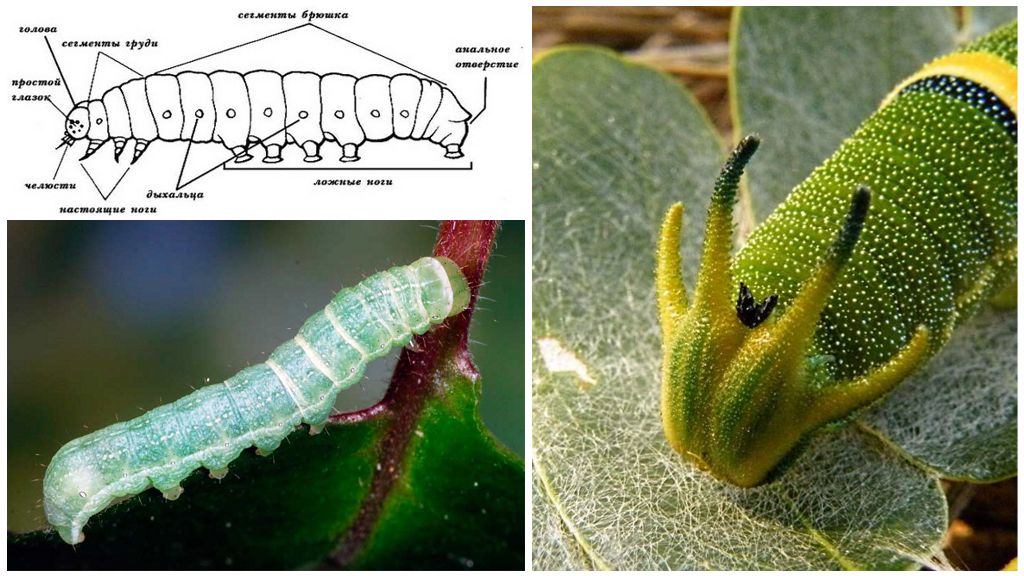
The head of the caterpillar is 6 parts merged together, as a result a dense capsule is formed.
- The area between the eyes and forehead is conventionally called the cheeks. In its lower part there is a hole, which in its configuration resembles a heart.
- For most insects, the round shape is typical. However, some varieties have a triangular, rectangular or heart-shaped head.
- Caterpillars, like other insect larvae, have a primitive brain. The parietal regions can significantly protrude above the surface of the body, forming a kind of "horns".
- On the side surfaces of the organ are miniature antennae antennae.
- Examining the structure of the caterpillar, it can be seen that all insects are distinguished by a gnawing mouth apparatus. Their upper jaws are well developed, which are equipped with denticles that allow them to nibble and tear food. There are tubercles inside the oral cavity with which insects chew food. The salivary glands are a specific spinner that allows the silkworm to form a thread. The lower jaw and lip are merged into a single complex.
The insect larva has 5-6 pairs of eyes and one lens. They are located in an arcuate manner or are combined into one complex organ, consisting of five simple eyes. The first is inside the arc.
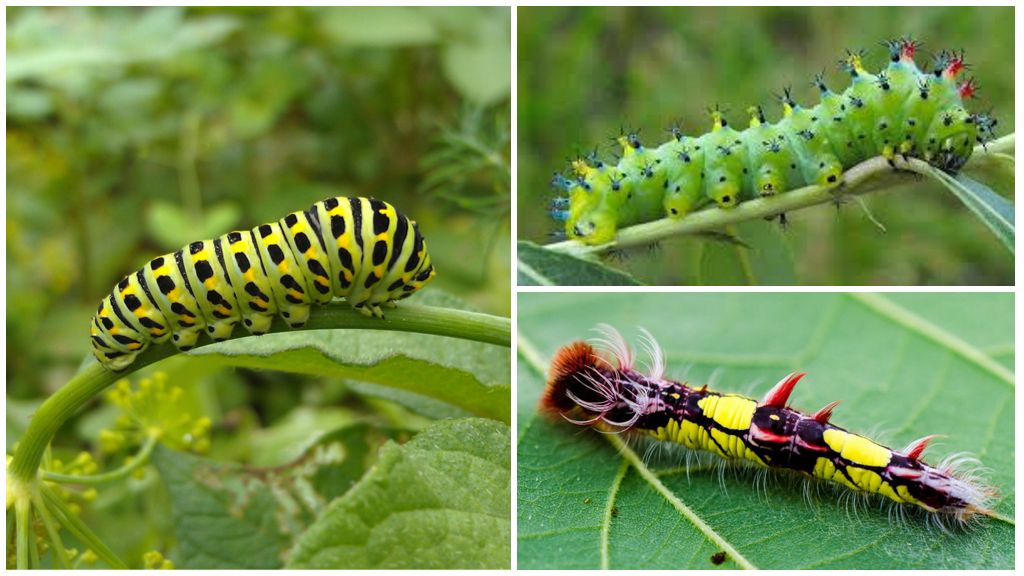
The trunk of most species is soft, enclosed in a membranous membrane. This provides the insect with good mobility. Fauna lovers are often interested in this question - how many muscles are there in the caterpillar.Biologists say that the muscle corset of the larva has 4,000 muscles, of which 250 are located in the head. The anus is located on the last part of the body, surrounded by special blades. The caterpillar (except for waterfowl representatives) has one spiracle located on the chest.
On a note!
Many are interested in how many legs a caterpillar has. Most representatives of the order Lepidoptera have 3 pairs of well-developed pectoral legs and 5 pairs of false abdominal extremities ending in small hooks. They can be placed in longitudinal, transverse rows or in the shape of a circle. The caterpillar's thoracic paws are equipped with a sole with a claw that the insect retracts or protrudes during movement.
Her body is almost never completely naked. On it there are always growths such as specific outgrowths, hairs, cuticles, which are formations in the form of cones, granules. The hairs on the body of the insect are located in a special way, corresponding to the generic or species of the larva.
Caterpillars have protective mechanisms in the form of easily separated hairs that irritate the skin. Exist poison caterpillarsemitting burning liquid or accumulating poison in the body.
Life cycle
In its development all representatives of the order Lepidoptera go through 4 stages: egg, caterpillar, pupa, butterfly. After mating, insect females lay eggs, which can develop from a few days to months. The length of the period depends on temperature conditions. The caterpillar easily gnaws through the egg shell. Under adverse weather conditions, the larva hibernates in the egg and only when spring comes, appears outside. Gluttonous caterpillars often eat the remains of their "shelter".
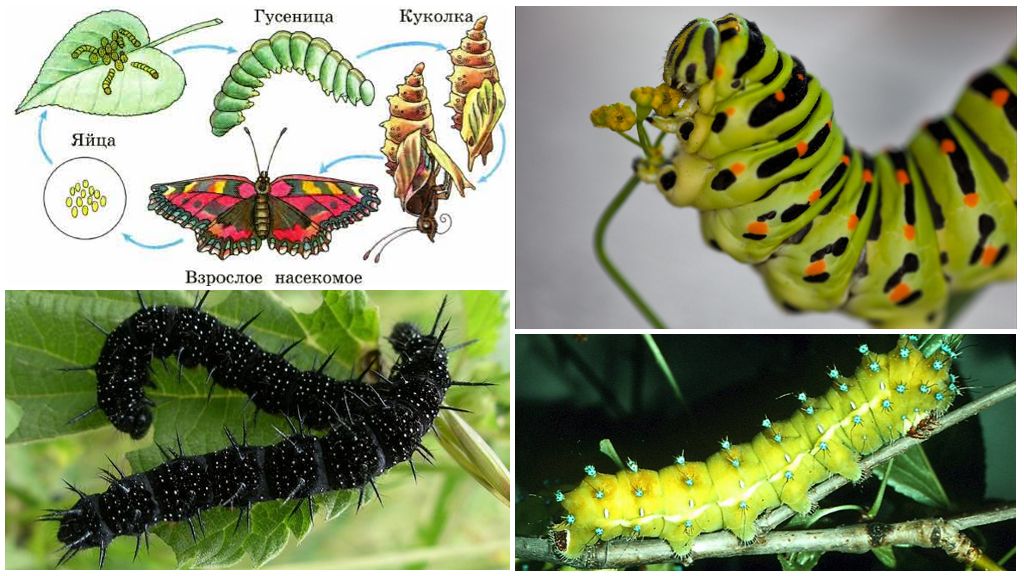
How many caterpillars live is a question that can often be found on the Internet. The duration of this phase of development of insects depends on the species and can last several days or years. This is due to the fact that the northern butterflies fall into hibernation without completing the cycle of their development.
Interesting!
Piper butterfly, living in the harsh northern regions, can be in the caterpillar stage for about 14 years.
A caterpillar has several phases of development. They are characterized not only by a change in color and size of the insect, but also by certain structural features. During life, an insect undergoes a certain number of molts, which depend on its belonging to a certain biological species. Typically, the larva molts 4 times, in representatives of individual species this number can vary from 5 to 7. Under adverse external conditions, the period of growth of the insect is delayed, and the number of molts increases.
On a note!
A shed caterpillar can molt 4 and 40 times.
Before starting this process, they stop eating, become motionless and hide in secluded places. Their skin is stretched, the head as if reduced in size. Dropping an old shell, the caterpillar can eat it. After going through all stages of molting, insects move to a new life stage.
Pupation of the caterpillar can occur in inaccessible places or directly on the plant that the larva fed on. Under certain conditions, insects travel considerable distances in search of protected places. Later, a butterfly is born from a pupa.
How the caterpillar lives and what it eats

For most species of caterpillars, the characteristic habitat is the surface of the earth, however, individuals are found that prefer water open spaces.
Interesting!
The larvae of the Hawaiian moth are distinguished by their unique ability to exist both in the air and under water.
Depending on the preferred living conditions, the caterpillars are divided into 2 categories - leading a hidden and free lifestyle. In accordance with this classification, it is easy to determine where certain insect larvae live.Leading hidden existence include such representatives of caterpillars: leaf-worms, underground, miners, etc.
Representatives of the second group live freely on the vegetation they destroy. So green caterpillars eat plants, and a masking color allows them to hide from external enemies.
Their nutrition, depending on belonging to a particular species, is quite diverse. The hatched larva first eats the egg shell, and then goes on to its usual diet. Caterpillars feed on leaves, flowers, and fruits of plants. However, in nature there are insects that prefer other types of food. In accordance with this feature, the larvae are divided into 4 groups:
- polyphages - feed on any vegetation;
- oligophages - give preference to plants of a certain type;
- monophages - eat a strictly defined type of plant;
- xylophages - use only wood.
There are other varieties of caterpillars, but they are not numerous.
For humans, a caterpillar is primarily a pest that causes enormous damage to cultivated green spaces. However silkworm plays a huge role in silk production. Insects are widely used in Chinese traditional medicine. Insect larvae of a certain species are also used to control weeds.
Interesting!
In China, India, North America, Africa and other places where caterpillars eat, they are considered a recognized delicacy and are more expensive than meat. Protein-rich insect larvae are used in food raw, fried, candied and canned.
Larvae have many natural enemies in nature. The greatest danger to them is birds. So titmouse, which eats caterpillars and uses them to feed the chicks, can kill up to 30 thousand insect larvae per season. Wasps feed their offspring with chewed caterpillars or, paralyzing them with poison, procure for future use. At the same time, if all the larvae remained alive, then after about 7 years, only the offspring of one butterfly would exceed the mass of the entire globe.
